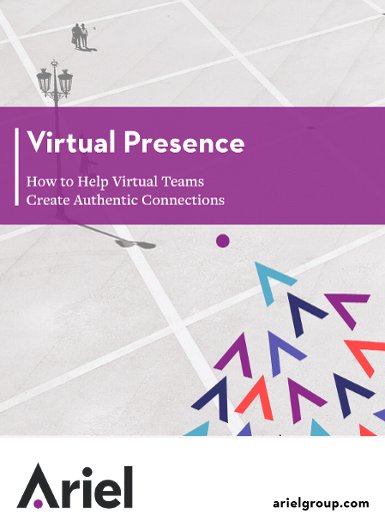How To Solve For Change Fatigue

The check-in allows me, as a participant, to know what’s going on with my coworkers. It’s increased my emotional intelligence in the workplace and I feel more connected to my teammates and colleagues and engaged at work.
Change. That thing the world tells us to accept because it helps us grow — that if we just move towards it, and allow its energy to wash over us, it will reveal the path we are supposed to take.
Or, as I like to call it, change is that thing that makes me want to pull my hair out.
I’m a creature of habit. I get annoyed if the office is out of my favorite coffee flavor. What?! No Caramel Vanilla Cream?
For me, big changes, like moving to a new place, always shorten my fuse. I find myself angry at the world because I have to pack up my things and rearrange them — even though it was my idea to “explore a new neighborhood.” Even if you are preparing for a change, like remodeling your home or planning a wedding, you may not adapt to additional stress well.
But what about change you aren’t prepared for? My sister will call me, frantic, to ask if I can fill in when her babysitter unexpectedly cancels. Or maybe there’s construction on your normal route to work and you have to go another way. You might get a dreaded call that your child is sick and you need to rush home.
I recently attended the ATD International Conference where Britt Andreatta, founder of Lynda.com, a LinkedIn company, spoke to attendees about the neuroscience of change and how to understand someone’s change load, and more importantly, their change fatigue.
What is a Change Load?
According to Andreatta, a change load is the total change someone is carrying in any given period of time. Say you are currently experiencing the “construction route change.” Frustrated by traffic, you now walk into a company meeting where the announcement is made, “Hey! Good news! We’re merging!” You might experience the world’s worst anxiety.
Why? Because we all have a change load. Any of these changes together can shrink your bandwidth, especially if you are experiencing one change right after another. However, if your change load is spread out (the construction ends three months before the merger), you might not feel it.
What is Change Fatigue?
While one change sounds emotionally exhausting, the reality is that each of us can feel differently about each one of our changes. For example, if you know the construction project is ending, a “thank goodness, one more day,” can help you get over the final hurdle. On the other hand, if you just found out about the merger, panic can set in.
If leaders aren’t aware of all the changes going on in the lives of their employees and they hit people with more change, it may be overload. This is what change fatigue is. It’s an exhaustion from all the changes taking place at once and it’s draining on human bodies. Andreatta reminds us that biologically, we are resistant to change, and we are easily mired down in survival and belonging in environments. Change disrupts that and as a result, our brains go into overdrive.
How to Monitor for Change Fatigue
Leaders need to be aware of the change going on in their employees’ lives – professionally and personally. Yes, personally too. We are more than just our title and role. We are human. And like it or not, personal life does impact how we show up at work.
At The Ariel Group, I’ve become really fond of the check-in process we use and realize that it can be a great tool to monitor change fatigue.
Before each meeting, the organizer will invite people to check-in to the call. What does this mean? Essentially, it can be anything, but the key component is this:
What percent present are you?
How present are you? For beginners, translate this to “how focused are you at work today?” I’ve said in a meeting, “I’m 75% present today. I should be able to finish the blog today. I’m hoping my brain will focus as I’m a little distracted about my grandmother. I spoke to my aunt on the way to work and she said my grandmother seems to have less energy and is becoming more forgetful. I’m trying to sort out if I can get up to Maine this summer and see her.”
It’s weird. Perhaps. It may seem odd in a business context, yes. Now, think about the insight you gained as a manager. Maybe how you hand out a new assignment or give feedback today is a little “kinder and gentler” considering the personal change you now know I’m experiencing.
Sometimes, the organizer will ask for a word or a metaphor to begin the meeting. For example, we recently had to say how we were getting ready for spring in a team check-in. Responses included spring cleaning, buying hiking boots (someone set a goal to hike this summer), and attending Opening Day. These “fun” ones, along with providing our percent present, have allowed me to learn more about my colleagues’ interests – especially the virtual ones – and find common ground to build relationships.
More importantly, the check-in allows me, as a participant, to know what’s going on with my coworkers. It’s increased my emotional intelligence in the workplace and I feel more connected to my teammates and colleagues and engaged at work. If I know they are experiencing a lot of changes, I’ll try to ease up on the frequency of email that day.
The reality is that we never know when change will hit. And we never know how change will affect us. A small workplace change (time to move your desks!) can feel like you’re sinking in quicksand if you’ve just been hit with having to replace your dishwasher. Use the check-in to help you understand where your coworkers are at – and, more importantly, where you’re at too.
